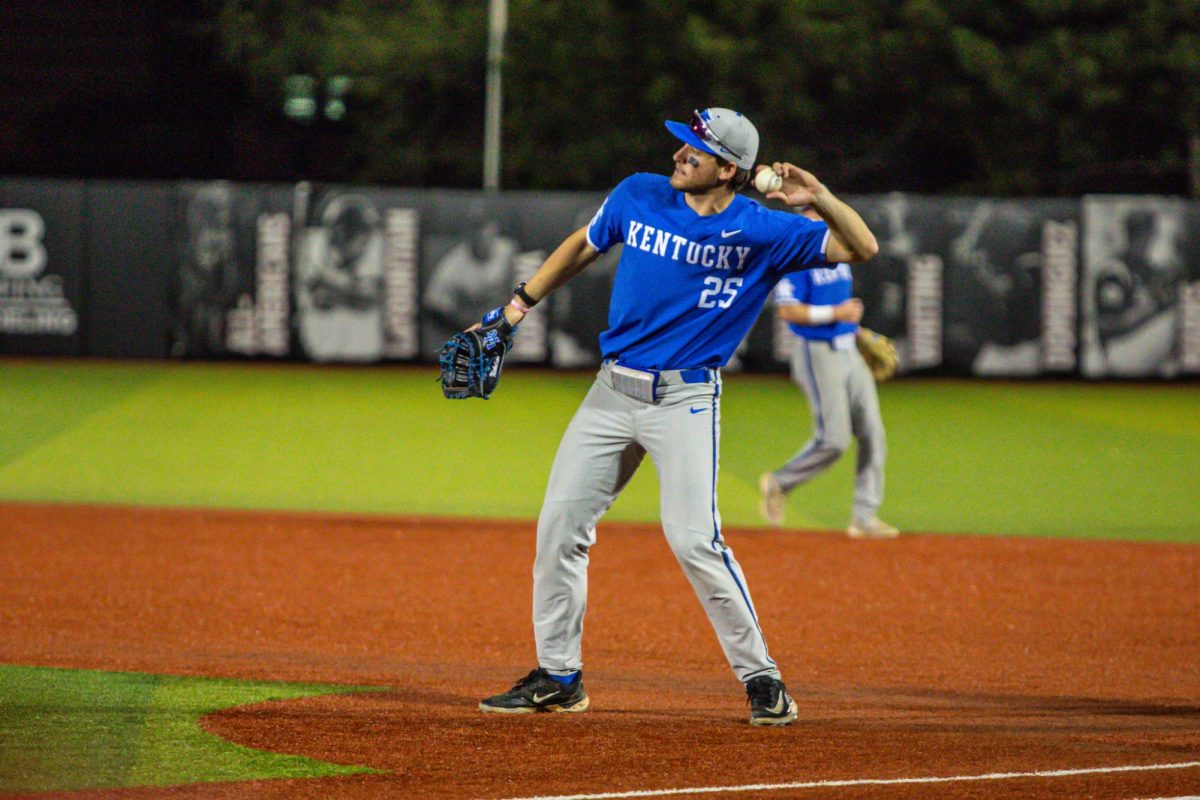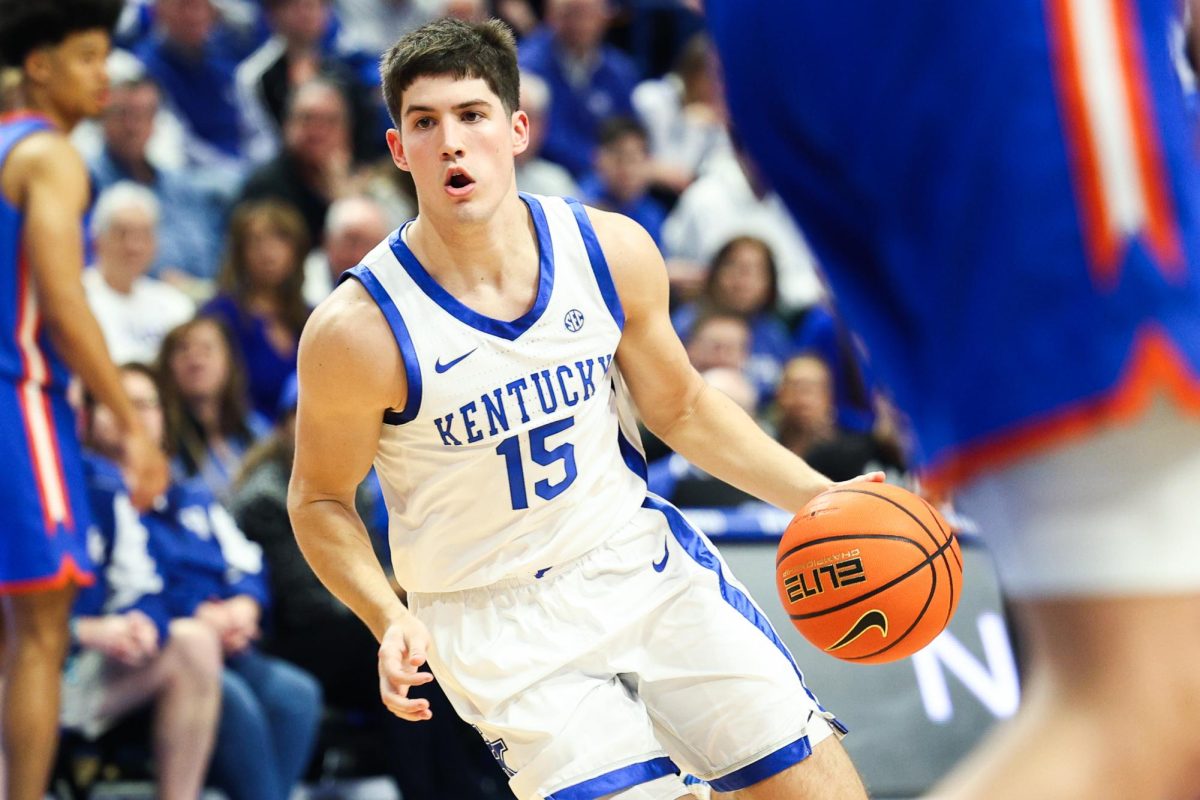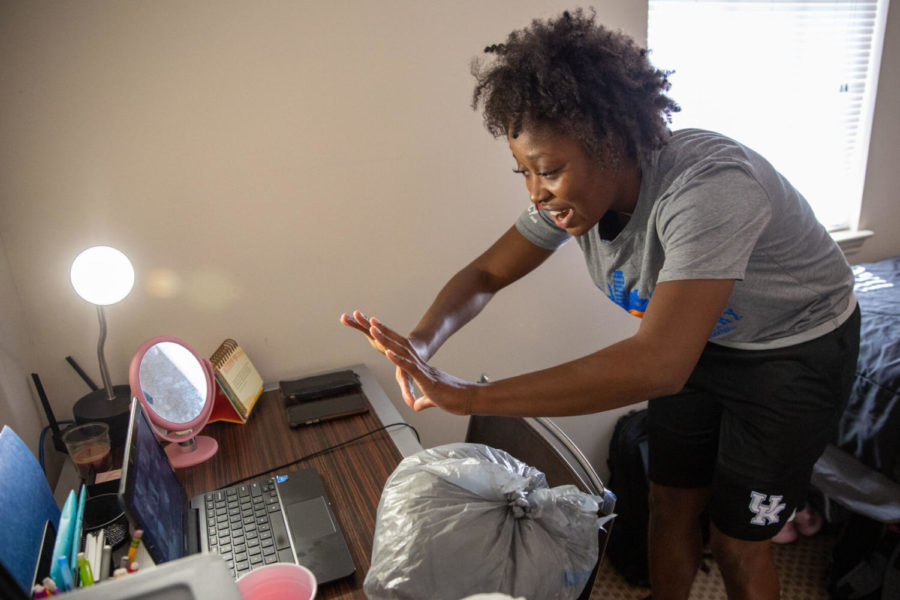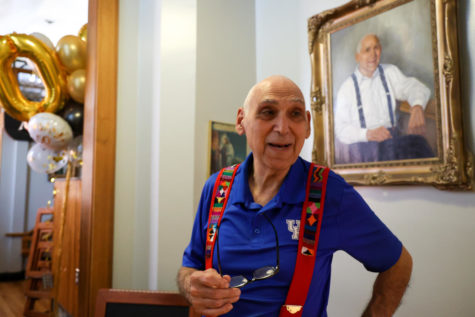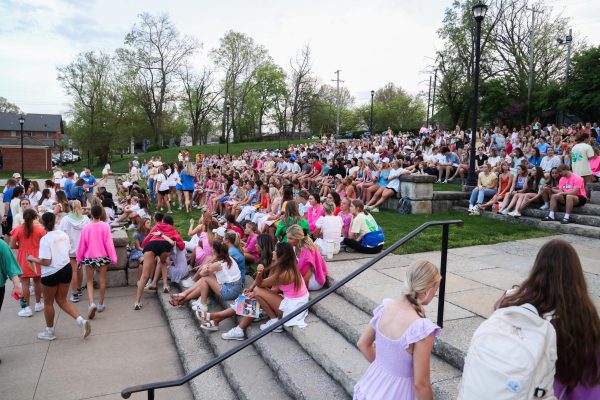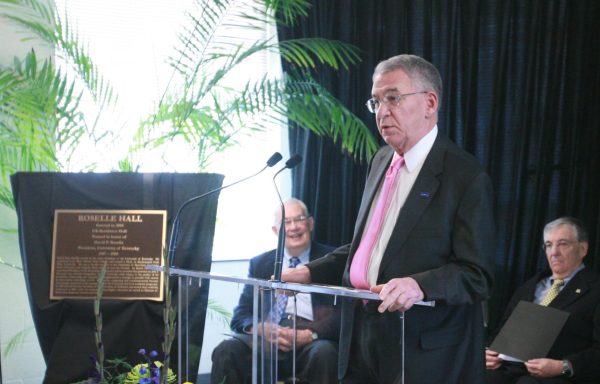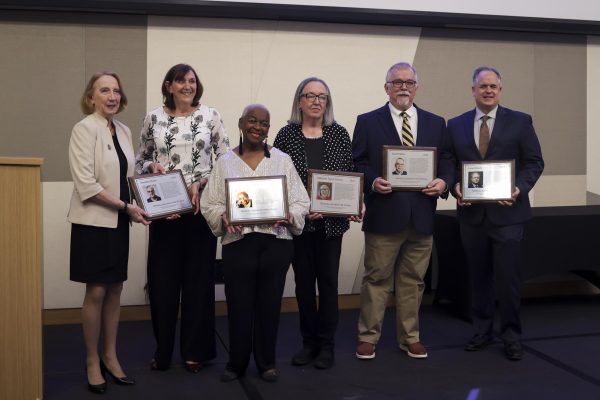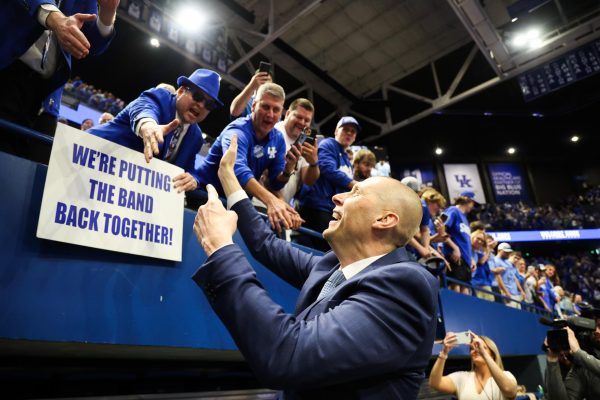Student teachers firsthand participants in virtual learning evolution
November 11, 2020
Emmy Johnston’s students didn’t know how to read.
Johnston, a senior and elementary education major, is currently in the practicum stage of her student teaching – full-time work with a cooperating teacher at a Fayette County public school. She began this school year with kindergarteners, who are having their first over school experience over Zoom as FCPS operate remotely this semester.
“Bless their hearts, they were so amazing and they worked so hard,” Johnston said of her kindergarteners. “I was terrified that first day that we started. I really was. But they did such an amazing job with it. And I really hated to leave that place. I never really cried on my last day. I didn’t I didn’t think that it would hit me that hard because I was like, I’ve only known these kids through a computer screen.”
Johnston is now student teaching with fifth graders, the same age she will teach when she starts her new job after graduating in December. Student teaching is required for her major, so Johnston was concerned that the pandemic would put an end to her plans.
“For the first month of the summer, I was very hopeful, very optimistic that we were going to be back in-person and I was going to get to experience being with my students. And I was a little let down whenever I found out that wasn’t going to be the case,” Johnston said. Herself and other student teachers have instead been teaching virtually, some going into the school building to stream from the classroom, others staying at home.
Johnston teaches from the school, standing across the classroom from her mentor teacher as they take turns with lessons and breakout rooms for about four hours of instruction a day.
“Even not having the kid there, it is awesome to be plugged into those communities and get to work with the teachers, because I just can’t imagine that I would do the same learning experience if I was just teaching from home,” Johnston said. Her students also go to special areas like library time and have dedicated lunches and recesses.
Dr. Channon Horn, an associate professor in the College of Education, coordinates the field teaching experiences for special education majors. She said that the department knew students would be able to complete their teaching hours but was not sure what the modality would be until the public schools announced their plans. Horn says student teachers are learning more than they thought possible during a virtual teacher, not just the practicalities of teaching but also the effort and heart behind it.
“That’s been such a learning point for me, seeing all of the adaptations the teachers have made to make sure that students, no matter what kind of resources they have or no matter what what’s going on in their living situation, that they’re accommodating those students and really finding ways to differentiate and make sure each student is getting that one on one instruction that they really need,” Johnston said.
Virtual teaching has also given student teachers insight into ongoing shifts in the discipline and their own motivations.
“This goes to show that I still want to do this, even through all the hoops that we’ve got to jump to make it work. And I think it’s also just a testament of how it is to be a teacher as well. You have to be flexible. You have to adjust,” said Kameron Roach, a senior kinesiology major.
Roach teaches P.E. classes in her practicum, rotating through six classes of students a day. Teaching remotely means Roach and her students do not have access to gym equipment. So they make do with what’s in their environment – shoes, plates, notebooks and toys – for games like tennis skills or ladder drills.
“We just improvised, having them cut a little piece of paper in half, get four pieces and spread them out or use objects like toys, shoes, and then step over your shoes or even books or notebooks and just really being creative,” Roach said. Her cooperative teacher uses a three-part video strategy where the kids do an activity, like dancing or yoga, a wellness lesson, like hand-washing, and meditation.
“I think it just opened my eyes to the fact that you have to stay up the technology as well, because there’s a lot of teachers who older who have kind of struggled with this whole process for the simple fact that they don’t use technology,” Roach said.
Student teachers like Roach and Johnston have an advantage – they have been on both sides of the virtual classroom and can learn from their experiences as students.
“I definitely understand their frustrations. When we changed to online learning back in spring and in the summer, I feel like I was doing more work than I would have done, been having in-person classes. In my situation and having to be on the computer all day for so long, was where it was tough and the motivation was definitely low,” Roach said.
Roach wanted to do her practicum in-person this fall because she enjoys being in the classroom with the students, but she is now grateful to do it virtually because it coordinates better with her schedule as a member of UK’s basketball team – and keeps her safer during COVID-19.
“I’m actually kind of like thankful that we’re not in a classroom, hopefully finish out online. I’m also nervous about catching it or, you know, passing on to somebody still out here. So nervous about that, because I know not only that people are dying and also because I still want to have a season,” Roach said.
FCPS are operating virtually except for a few students who receive extra, targeted instruction in-person. UK’s high case numbers earlier in the semester contributed to a red zone rating that kept Fayette County from going back to school.
“A student’s perspective is that they don’t want to miss out on those college experiences and from a teacher’s perspective, we’re missing out on having our students there. We know that we’re giving them the best instruction that they can have virtually or that we can give them virtually, but they would have a better learning experience in person,” Johnston said.
Johnston, Roach and Horn all said that public school kids are struggling with a lack of social interaction.
“That’s where we’ve talked about being super intentional, like making sure that you are knowing every single person by name, keeping kind of a running record of what are the conversations that you hear that they’re having with their peers when the lesson hasn’t started,” Horn said.
Johnston copes by having small group lunches so her students can get a chance to talk, not just to her, but to each other. Unlike last semester, when both Roach and Johnston had a couple weeks in-person with students before switching to online, they have had to start from the beginning to build relationships – the hardest part of teaching virtually for Johnston.
Roach said the thing she is really missing from student teaching is learning classroom management; but, she’s seeing tradeoffs in other areas, like more exposure to technology.
“Another thing that’s been huge that I’ve learned this semester that I wouldn’t have considered going in is just that element of collaboration,” said Johnston. “And I think that has been a really cool takeaway for students, teachers and teachers alike that. Everyone is really working together right now to make sure that the students are getting that instruction that they need.”











































